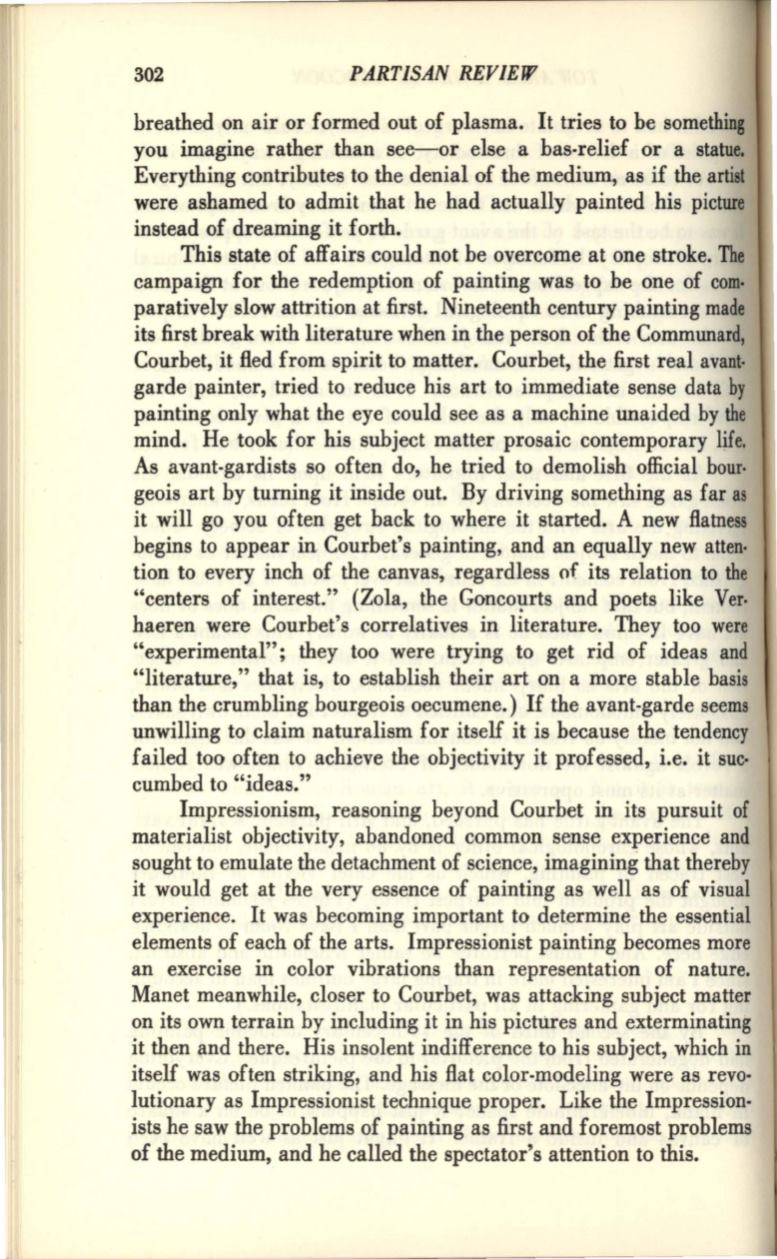
302
PARTISAN REVIEW
breathed on air or formed out of plasma. It tries to be something
you imagine rather than see-or else a bas-relief or a statue.
Everything contributes to the denial of the medium, as if the artist
were ashamed to admit that he had actually painted his picture
instead of dreaming it forth.
This state of affairs could not be overcome at one stroke. The
campaign for the redemption of painting was to be one of com·
paratively slow attrition at first. Nineteenth century painting made
its first break with literature when in the person of the Communard,
Courbet, it fled from spirit to matter. Courbet, the first real avant·
garde painter, tried to reduce his art to immediate sense data
by
painting only what the eye could see as a machine unaided by the
mind. He took for his subject matter prosaic contemporary life.
As avant-gardists so often do, he tried to demolish official hour·
geois art by turning it inside out. By driving something as far as
it will go you often get back to where it started. A new flatness
begins to appear in Courbet's painting, and an equally new atten·
tion to every inch of the canvas, regardless of its relation to the
"centers of interest." (Zola, the Gonco¥rts and poets like Ver·
haeren were Courbet's correlatives in literature. They too were
"experimental"; they too were trying to get rid of ideas and
"literature," that is, to establish their art on a more stable basis
than the crumbling bourgeois oecumene.)
If
the avant-garde seems
unwilling to claim naturalism for itself it is because the tendency
failed too often to achieve the objectivity it professed, i.e. it suc·
cumbed to "ideas."
Impressionism, reasoning beyond Courbet in its pursuit of
materialist objectivity, abandoned common sense experience and
sought to emulate the detachment of science, imagining that thereby
it would get at the very essence of painting as well as of visual
experience. It was becoming important to determine the essential
elements of each of the arts. Impressionist painting becomes more
an exercise in color vibrations than representation of nature.
Manet meanwhile, closer to Courbet, was attacking subject matter
on its own terrain by including it in his pictures and exterminating
it then and there. His insolent indifference to his subject, which in
itself was often striking, and his flat color-modeling were as revo–
lutionary as Impressionist technique proper. Like the Impression–
ists he saw the problems of painting as first and foremost problems
of the medium, and he called the spectator's attention to this.


